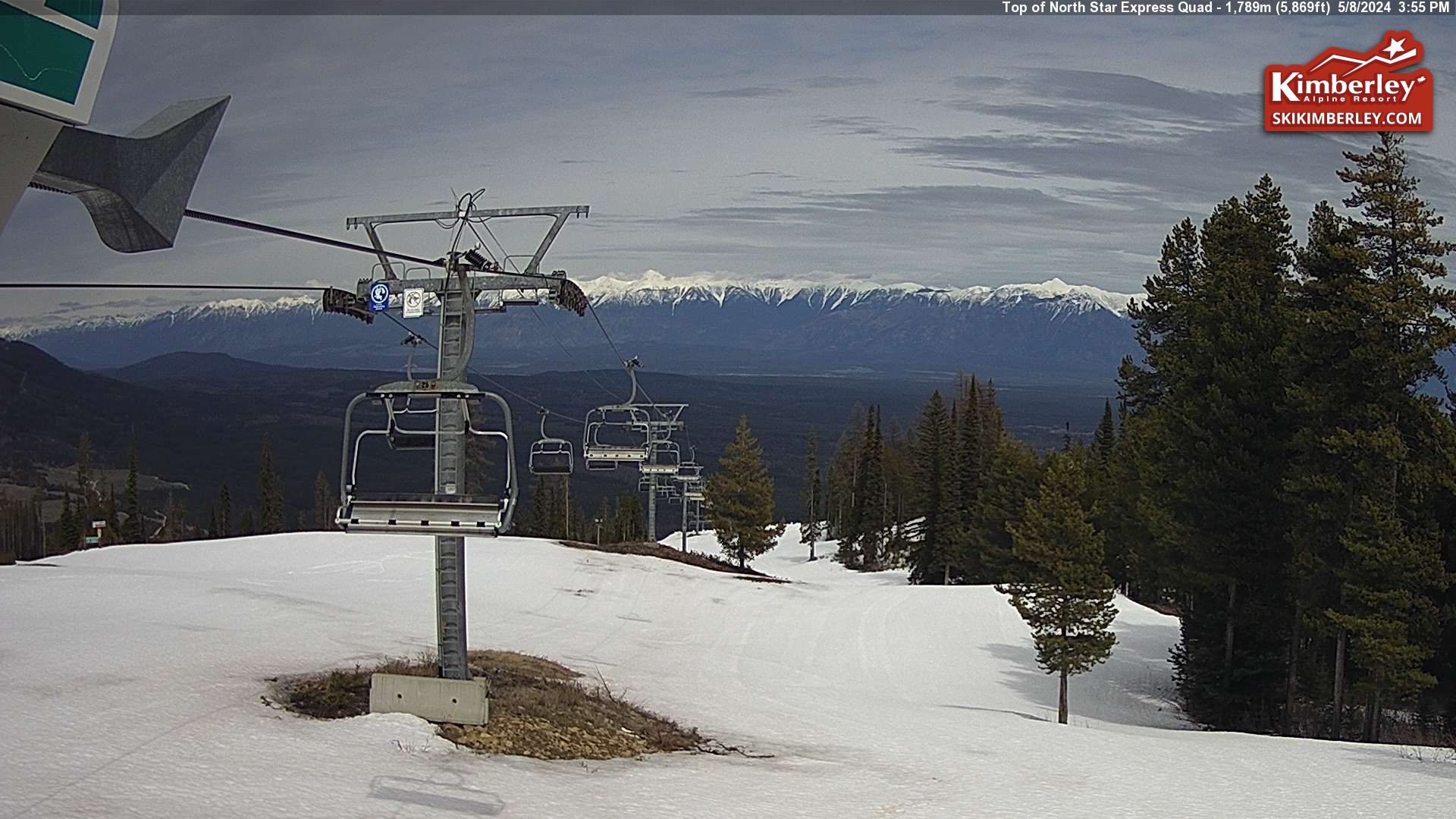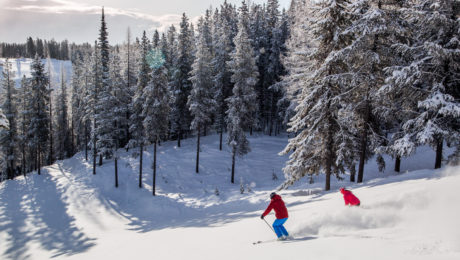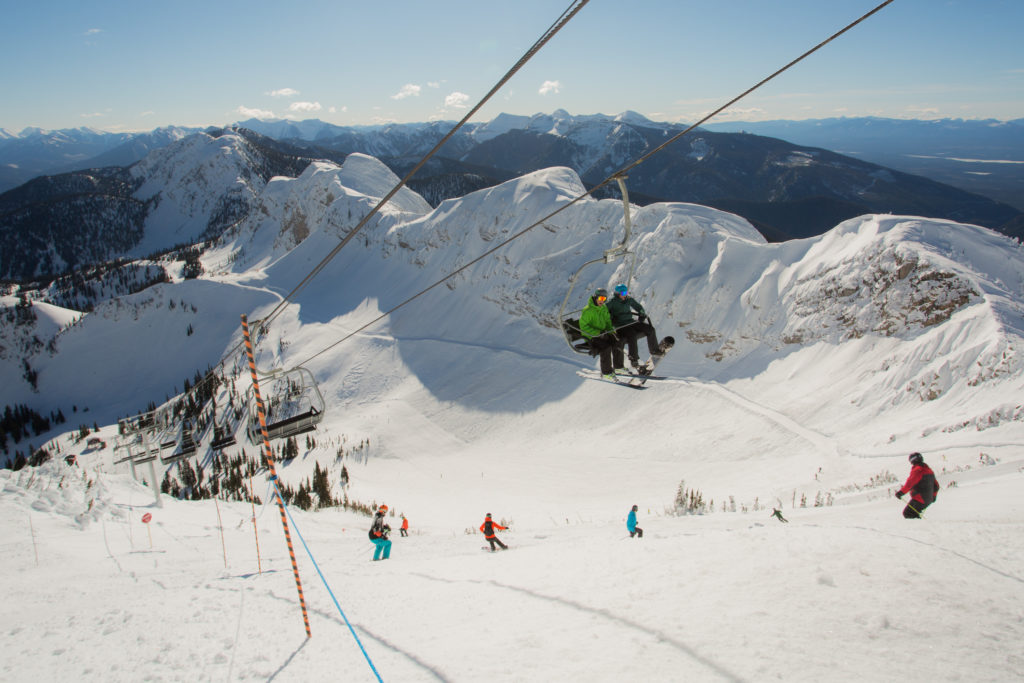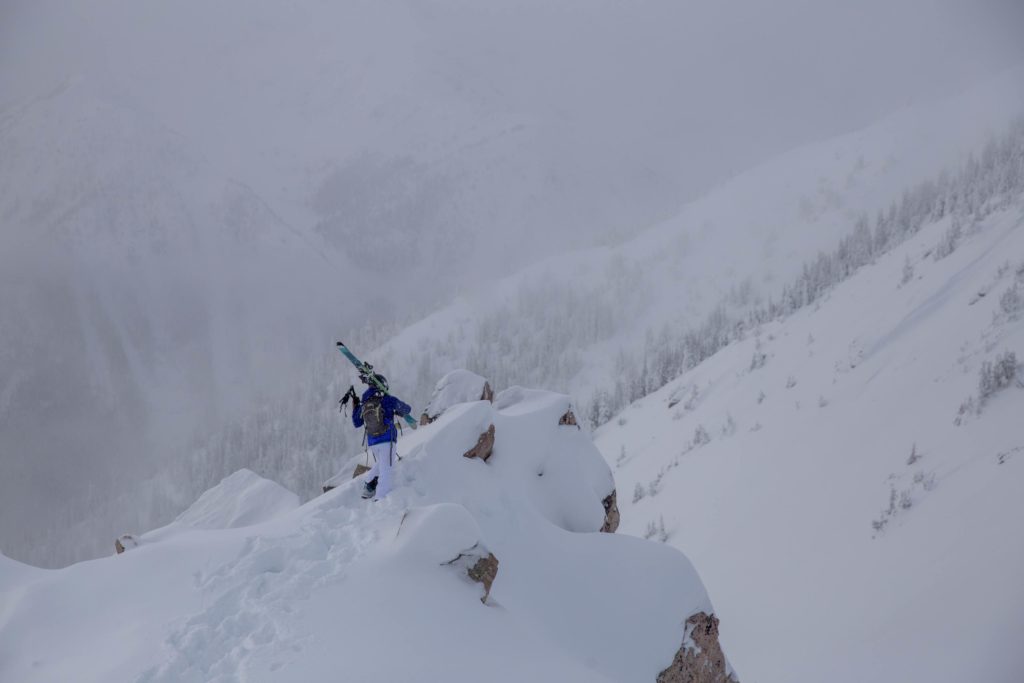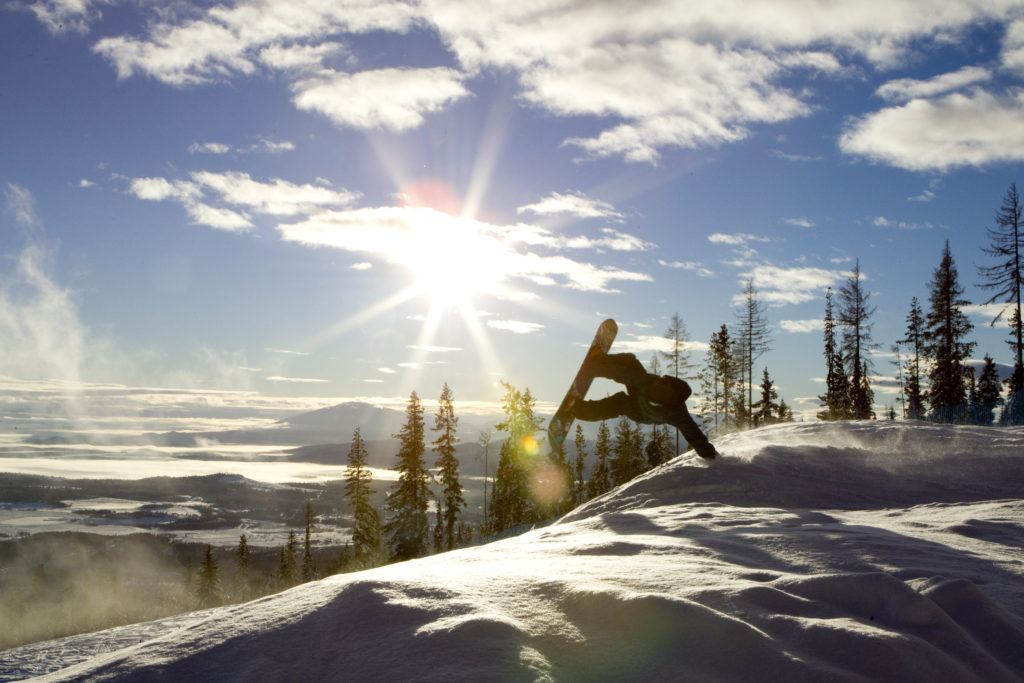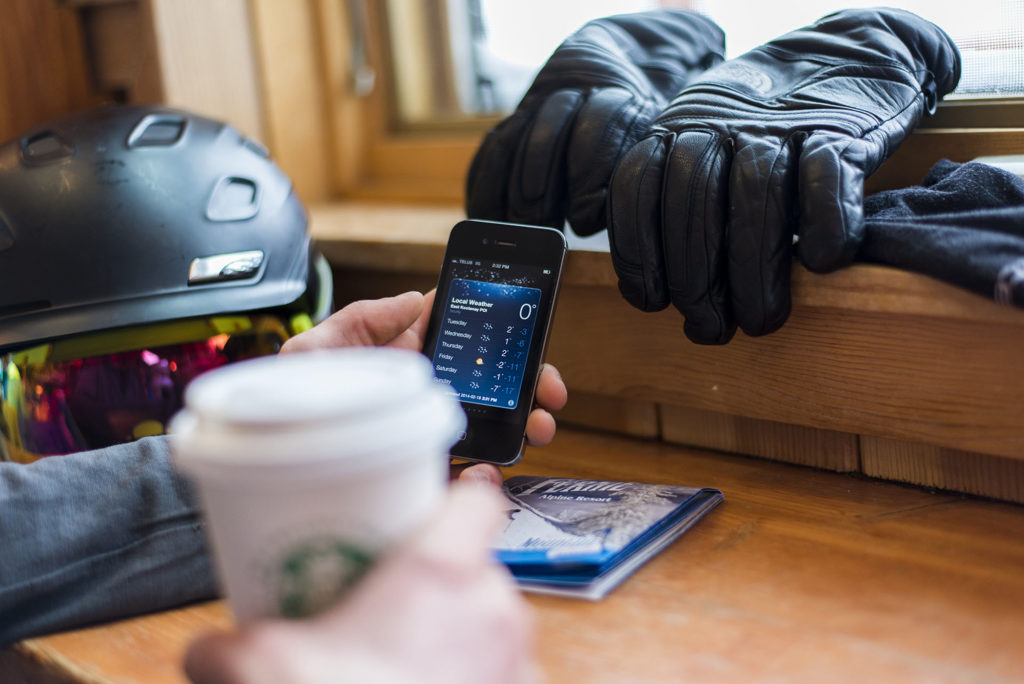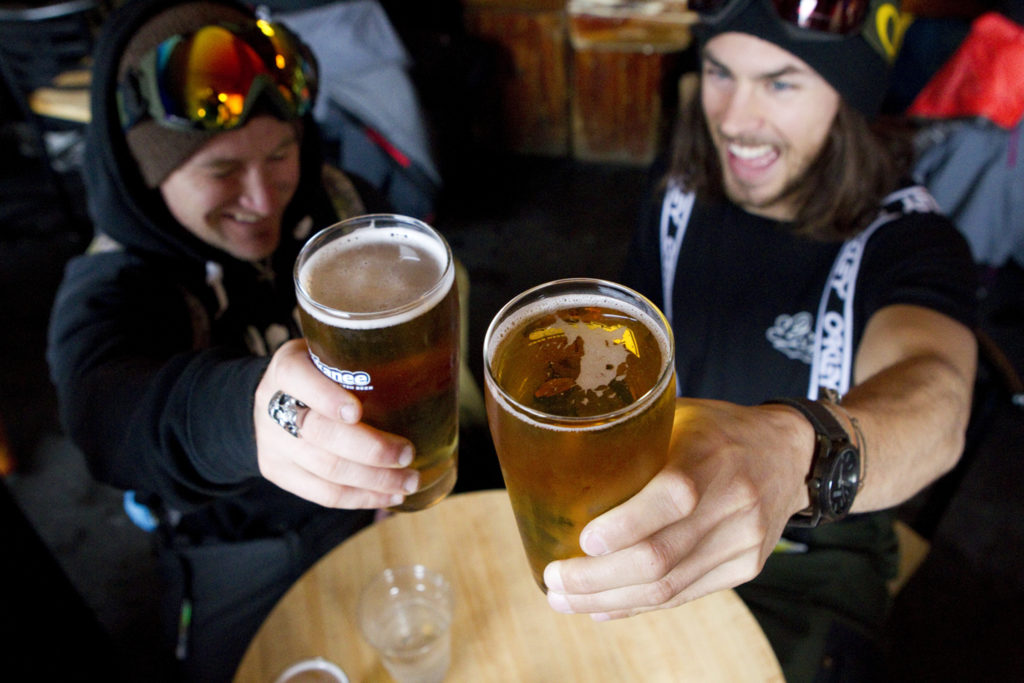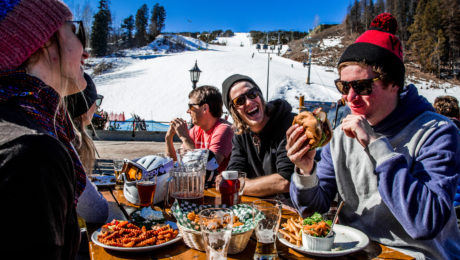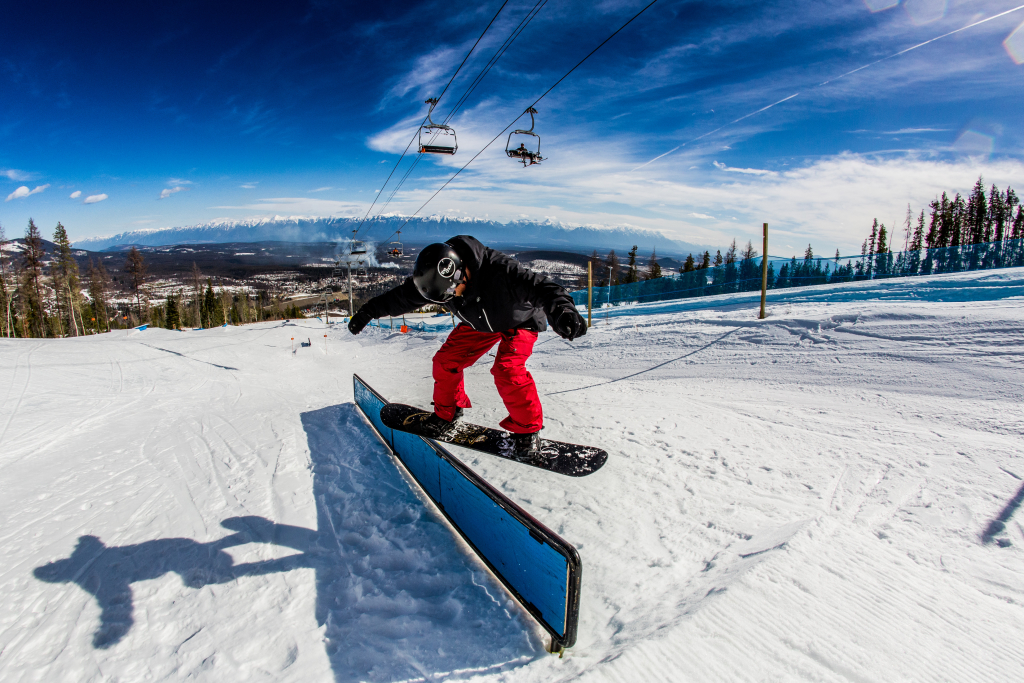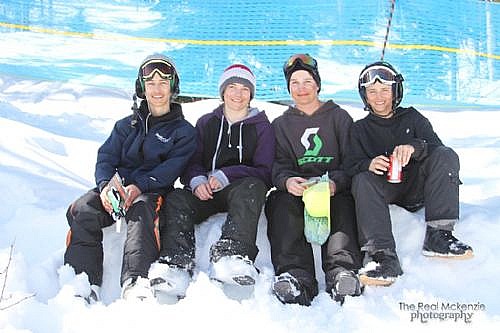August 22, 2016
If Americans have a cultural stereotype about Canada, it’s that we’re a land of ice and snow inhabited by “Eskimos” and policed by red-coated Mounties on horseback. (The Mounties drive in police cars and they have the same tools as cops in America… and the Eskimos, well, they are actually called Inuit, and live much closer to the North Pole).
But Canadians certainly do celebrate winter, and of course, skiing and snowboarding. Our resorts – though perhaps not quite as familiar or accessible as Vail or Tahoe — compare favourably in every way. Whistler, of course, is the most widely-known—the resort hosted the 2010 Winter Games alpine skiing events—and it’s continuously ranked highly amongst the (mostly) American readers in SKI Magazine’s annual resort poll. And Banff/Lake Louise are on the radar map—though most Americans (like Canadians) visit there in the summer months.
Resorts of the Canadian Rockies believes that the best discoveries in skiing are the unexpected ones—and, like siblings, their three resorts—namely, Fernie Alpine Resort, Kimberley Alpine Resort, and Kicking Horse Mountain Resort—offer a rootsy, authentic Canadian ambiance that makes each of them worth visiting—even on one trip.
Perched above a historic mining town that still relies on nearby natural resources, FERNIE ALPINE RESORT is all about powder and adventure. Poking skyward like a giant baseball mitt, the rugged Lizard range hauls in over 35 feet of legendary Rocky Mountain fluff annually and attracts freeriders from all over the world. If you’re lucky, you’ll be in town during the raucous Griz Days celebration that celebrates the mythic mountain man who makes it snow. Independent “non-chain” stores and restaurants thrive in the red-brick building main street of historic Fernie, once named the “Coolest Town in North America” by Rolling Stone magazine. Indeed, many Americans who visit here comment on how much it’s “like Telluride or Aspen used to be.”
KICKING HORSE MOUNTAIN RESORT west of Golden is a true “big mountain” experience, with 1,260 metres (4,133 feet) of vertical—fourth-highest in North America. Compared by those in the know to American resorts like Jackson Hole and Squaw Valley, Kicking Horse boasts 121 runs, four alpine bowls and 85 inbound chutes spread across 2,800+ acres of skiable terrain. No stay at Kicking Horse is complete without a visit to Canada’s most elevated restaurant: Eagle’s Eye Restaurant, a mountain-top, fine-dining experience. Four mountain ranges come together to create a mountain panorama that’s second to none.
Nestled in the majestic Purcell Mountains in BC’s southeastern corner, KIMBERLEY ALPINE RESORT receives more hours of sunshine than any other resort in the province. Its 80 runs range from open glades to gentle cruisers to thigh-burning bump runs. Dive into the Easter Bowl on the mountain’s backside or enjoy Kimberley’s front side cruising. Kimberley even offers Canada’s longest night skiing/riding terrain. Stay slope-side and ski from your door in the morning or enjoy the charming Bavarian-themed town just down the hill. Kimberley compares favourably to the family friendly vibe found at Snowmass, Keystone, or The Canyons—with a superb ski school and perhaps the most high-value vacation packages in North America.
Thanks to Canada’s devalued currency, Americans considering a ski vacation north of the 49th parallel receive a thirty percent discount, before they even start shopping for the best deals of lifts, accommodation, and lessons. “Our close proximity to the United States means that Fernie and Kimberley have always had visits from keen skiers in border states—folks who live in Whitefish, Kalispell, Sandpoint, and Spokane,” says “Powder Matt” Mosteller, spokesperson for the Resorts of the Canadian Rockies. Holidays at Thanksgiving, Christmas, New Year’s, Martin Luther King Day, President’s Week and even Easter attract skiers and riders from a wider net, including Seattle, the Bay Area, Los Angeles and even major Midwestern and eastern cities.
And there are a few other differences. Take money, for example. Canadians use the same dollars and cents system that Americans have, but your wallet won’t be budging with one-dollar bills if you ask for change for a five. Canadians have “loonie” and “toonie” one-dollar and two dollar coins. Different denominations of dollars ($5, $10, $20, $50 and $100) are in different colours (and some words, such as ‘colour’ have an extra ‘u’ in them – don’t ask.) Gas (and all liquids) are priced in liters – $1.20 per liter equals about $4.00 per gallon of gasoline.
Snow depth is measured in centimetres (doesn’t “thirty centimetres” sound deeper than “eleven inches”?). And the outside temperature is in degrees Celsius. Don’t freak out if the temperature is minus 5, that’s only 23 degrees Farenheit, perfect skiing temperature.
Oddly, some things are the same. If you ask the bartender for a pint of beer, he’ll pour you a 12 ounce glass. And if you need anything else, just ask! To dispel another myth—not all of us speak French, (and we actually say ‘a-bout’, not ‘a-boot).’
Welcome to Canada, partner. Your powder is waiting.
Words: Steven Threndyle
Photos: Raven Eye Photography, Vince Mo, Brooke Wilson, Abbydell Photography
- Published in News
Don’t be one of those skiers or snowboarders who decide to store their gear in the garage by the time the first tiny flower begins to bloom in early March. Indeed, there’s a rather cruel irony to spring skiing. Days are longer. Snow is softer. Vacation packages are cheaper. And you’ll come back to the city with a killer tan. Tucked into the southeastern corner of British Columbia and just a short shuttle from the city of Cranbrook and its Airport of the Canadian Rockies, Fernie Alpine Resort and Kimberley Alpine Resort really know how to celebrate spring.
- Spring skiing starts with sunshine, and plenty of it. After three months of heavy snowfall and endless face shots, most skiers and riders are happy to see ol’ sol. How much sunshine is there? Well, Cranbrook, BC (home to the Airport of the Canadian Rockies), boasts over 2300 hours of sunshine annually. Morning temperatures start a few degrees Celsius below freezing, but warm up by mid-day to very comfortable It’s not exactly spring in Vancouver, but the sunshine is abundant and is strong enough to make the need for sunscreen on exposed patches of skin mandatory. On another note, keep the bikinis and surf shorts for the hot tub, you really don’t want a bad case of road rash if you fall on corn snow!
- There’s plenty of snow. It goes without saying that by the time the vernal equinox rolls around, that base measurements on the mountain exceed two metres or more. That means you won’t ding any rocks or stumps and can ski with confidence on all aspects. At this time of the year, it’s prudent to “follow the sun” around the mountain; starting with slopes that Both Kimberley and Fernie have many runs that face in different directions –
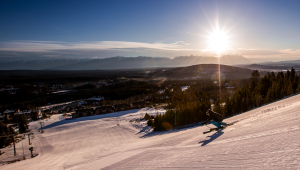 east and south facing runs “warm up” the quickest, west and north facing runs receive sun later in the day. It’s worth noting that even on the warmest spring days, north facing slopes can hold grippy, even powdery snow because they’re in the shadows all day long. And of course, the higher you go on the mountain, the colder temperatures will get.
east and south facing runs “warm up” the quickest, west and north facing runs receive sun later in the day. It’s worth noting that even on the warmest spring days, north facing slopes can hold grippy, even powdery snow because they’re in the shadows all day long. And of course, the higher you go on the mountain, the colder temperatures will get. - Not only is the sun more powerful, by the time March rolls around the days are getting longer, too. Early birds will want to rise near dawn and get the heart beating with an invigorating morning run. And make sure you go for a walk around downtown Kimberley or Fernie after the lifts shut down. Enjoy the fiery rays of golden light that mountain folk call alpenglow.
- Combine sunshine and a deep base and you get… corn snow. Corn snow is so named because its granular structure resembles kernels of corn that have been cut from the cob. The kernels form on a melt/freeze cycle. As the sun comes out and intensifies during the day, hard, icy snow starts to melt and morphs into a slushy texture (think of a snow cone that you eat at a fair or farmer’s market). Forming in a layer up to several centimetres thick, these pellet-like grains are easy to set an edge in and a delight to ski. Fearsome mogul runs become easily tamed piles of mush. Bulletproof groomed slopes develop a layer of granular goodness that makes it fell like your Marty McFly and his hoverboard – literally, you’re cruising effortlessly on a thin carpet of frictionless, ball bearing snow. Corn snow is often called “hero snow” because it’s so easy to work with – push out your skis and “rail” those hard carving turns. Or widen your stance, flatten your ski and butter some spins in the terrain park – it’s all good. To get the most out of your skiing day, sign up for a lesson or two and explore chutes, alpine bowls, soft bumps, and carpeted cruisers. Lessons are worth
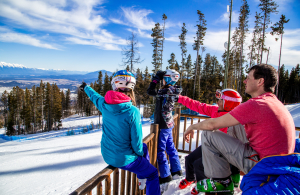 taking at any time of year, but since you’ve probably already got your ‘ski legs’, you can take more chances and have more fun!
taking at any time of year, but since you’ve probably already got your ‘ski legs’, you can take more chances and have more fun! - Blue skies and puffy clouds are great for snapping photos with your iPhone camera or recording videos on GoPro. At high mountain elevations, the blue end of the spectrum becomes especially vivid, which is why spring skiing is synonymous with “bluebird days.” Of course, you’ll want to Snapchat or Instagram your day on the slopes, but here’s a high contrast tip: try shooting when the sun’s a bit lower in the sky, before ten in the morning and after two in the afternoon to reduce harsh glare and black skier/ white background contrast. You might even wait until the sun ducks behind a cloud for an instant to make the colours and skin tones pop a bit.
- Virtually all school districts throughout British Columbia now receive a two week Spring Break during the month of March. , Spring Break sees both Kimberley and Fernie with virtually all terrain 100 percent open and with short, manageable lift lines.
So, extend your ski season this spring at Fernie Alpine Resort and Kimberley Alpine Resort… and get a great goggle tan!
Words by Steven Threndyle.
Photos by Raven Eye Photography & The Real Mckenzie Photography
- Published in News



